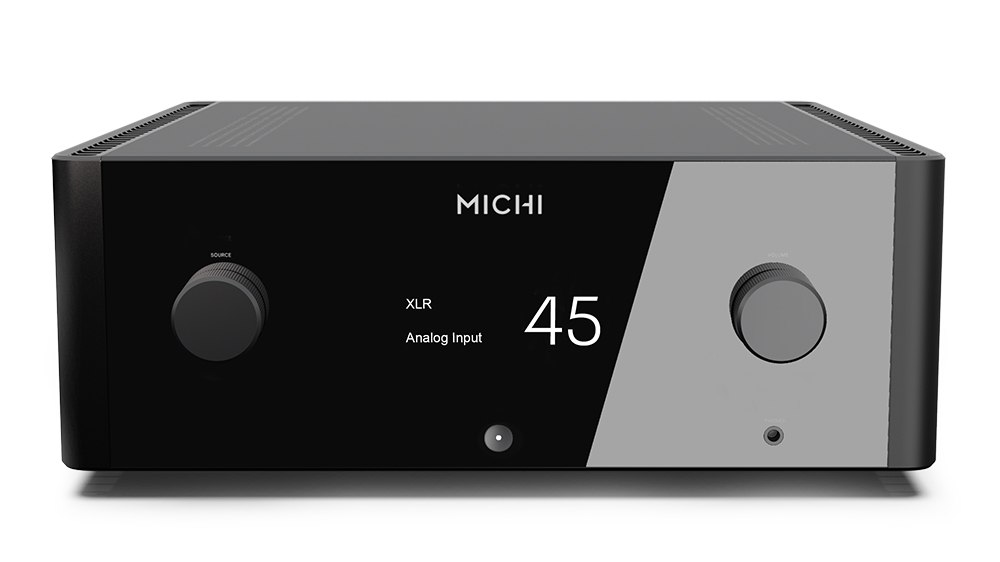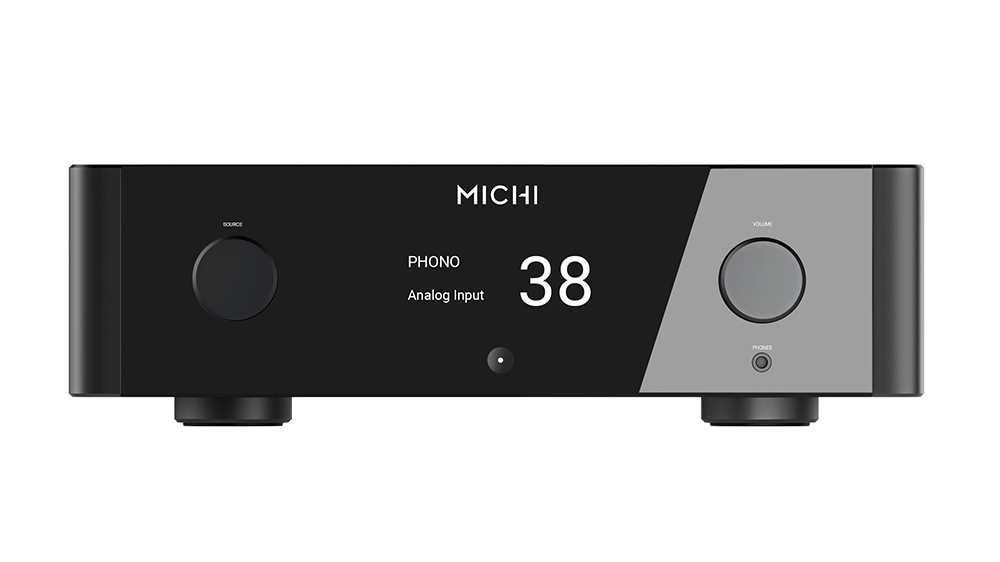Rotel expands Michi portfolio with X3 and X5 integrated amplifiers
The fourth and fifth Michi products to arrive since the high-end brand was revived last year

Rotel has expanded the Michi portfolio with two new integrated amplifiers, diversifying its existing pre and power amplification line-up. The Michi X3 and X5 (pictured top) join the P5 control amp, S5 stereo amp and M8 Monoblock amp that were introduced in November last year, when the high-end electronics brand re-entered the market after a long hiatus.
The Michi X3 delivers 350 watts of power into 4 ohms and is driven by a toroidal transformer that feeds independent analogue, digital and power amplifier voltage regulator circuits for optimal power isolation. Further measures to isolate music signals and processing from the amplification stage have been taken in the implementation of the direct-path circuit topology.
The X3 has no fewer than 13 source inputs, which include XLR (one), analogue RCA (three), digital optical (three) and coaxial (three), USB Type B (one), moving magnet phono (one) and aptX Bluetooth.

The 600-watt X5 amp expands on that connectivity list with a fourth pair of RCA inputs and a phono stage that’s compatible with both moving magnet and moving coil cartridges. There’s also DSD decoding and MQA rendering abilities, as well as a more advanced AKM DAC chip (32-bit/768kHz) onboard.
The Michi X3 (£4300, $4999) and Michi X5 (£6300, $6999) will be available in October and November respectively. Australian pricing and availability is yet to be announced.
MORE:
Rotel launches three high-end Michi amplifiers
Get the What Hi-Fi? Newsletter
The latest hi-fi, home cinema and tech news, reviews, buying advice and deals, direct to your inbox.
McIntosh Group's Sumiko wins Rotel Electronics distribution
Keep reading What Hi-Fi? with this amazing £10 subscription offer!
Becky is the managing editor of What Hi-Fi? and, since her recent move to Melbourne, also the editor of the brand's sister magazines Down Under – Australian Hi-Fi and Audio Esoterica. During her 11+ years in the hi-fi industry, she has reviewed all manner of audio gear, from budget amplifiers to high-end speakers, and particularly specialises in headphones and head-fi devices. In her spare time, Becky can often be found running, watching Liverpool FC and horror movies, and hunting for gluten-free cake.
-
manicm Am I the only one who demands USB-A from modern digital sources? That’s why right now I’m partial to Marantz/HEOSReply -
Gray Reply
It's only that they're using a B rather than A type connector type isn't it?manicm said:Am I the only one who demands USB-A from modern digital sources?
It's still a USB input, just requires a USB A to B lead or adapter that's all, surely.
It's the £4,300 or £6,300 that's more of a problem to me than the £1.70 needed for this:
https://www.ebay.co.uk/itm/USB-2-0-Type-A-Female-Socket-to-Type-B-Male-Plug-Adapter-Convertor-Printer-DYMO/163301583183?hash=item260588694f:g:7UsAAOSwapdbu7vZ -
manicm ReplyGray said:It's only that they're using a B rather than A type connector type isn't it?
It's still a USB input, just requires a USB A to B lead or adapter that's all, surely.
It's the £4,300 or £6,300 that's more of a problem to me than the £1.70 needed for this:
https://www.ebay.co.uk/itm/USB-2-0-Type-A-Female-Socket-to-Type-B-Male-Plug-Adapter-Convertor-Printer-DYMO/163301583183?hash=item260588694f:g:7UsAAOSwapdbu7vZ
It’s not quite so simple, USB-B sockets on amps like these are meant for connecting PCs. Even with an adapter, using memory sticks/drives - which is what I want - won’t work. -
Gray Reply
True enough. And on some products there's the odd type A socket that won't accept USB sticks / drives. Things are rarely clear-cut in these times of 'simplicity'.manicm said:It’s not quite so simple, USB-B sockets on amps like these are meant for connecting PCs. Even with an adapter, using memory sticks/drives - which is what I want - won’t work. -
cryanhorner Sorry if this was established in the article, I wasn't clear, does this work as a streamer, taking the place of my bluesound node (similar to the NAD m33) or would i still need an external streamer? If I have it plugged into my tv, can i just open apple music other streaming service on the tv and play that into the amp as the "source"? The issue being, i'm interested in reducing the number of physical boxes on my console, and eliminating the need for a seperate amp and streamer/dac would be helpful.Reply

